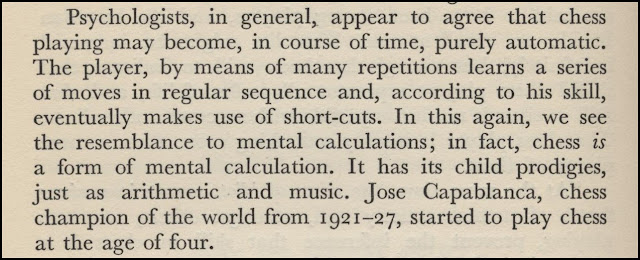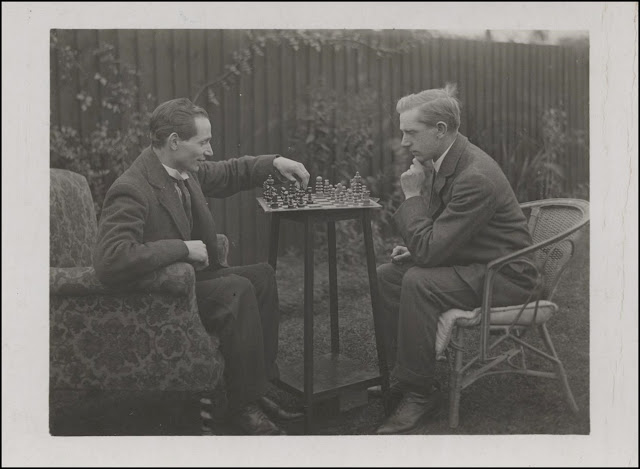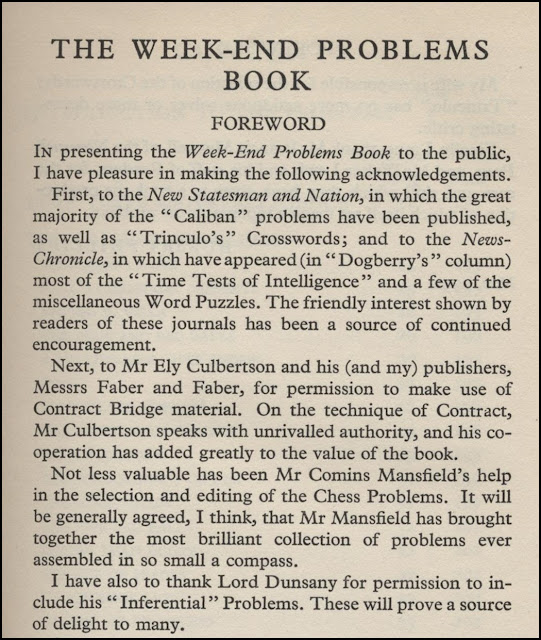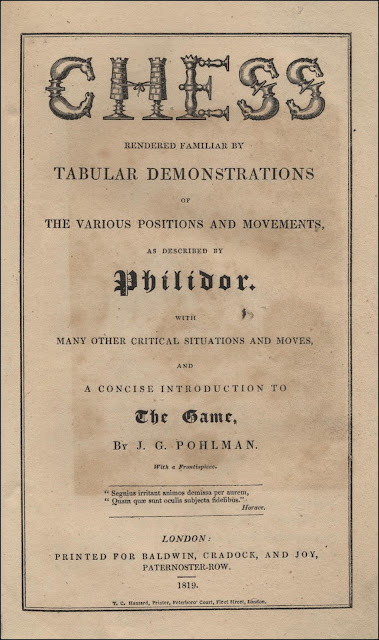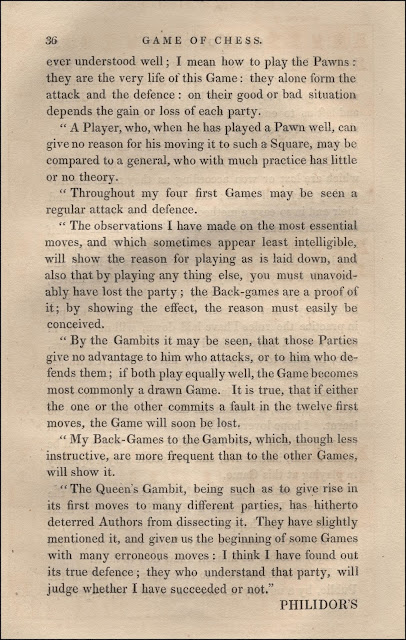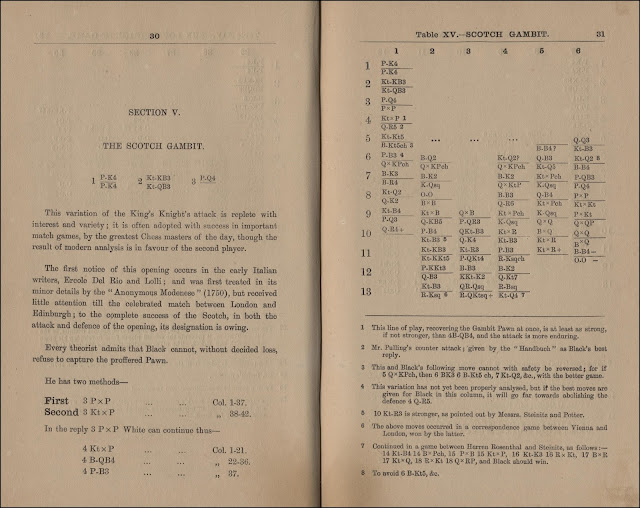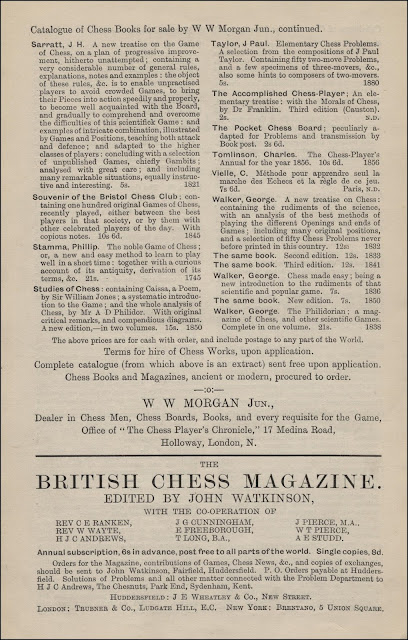I referred recently to the number of books listed in Betts' Bibliography that had only partial chess content and below are two examples, with a further two books not recorded in Betts.
Mental Prodigies; An Enquiry into the Faculties of Arithmetical, Chess and Musical Prodigies...., by Fred Barlow, London 1951.
This book claimed to be the first attempt to gather together particulars of those unusual people exhibiting certain curious mental abilities, and the Introduction promised "Investigations will not be confined to calculating prodigies. We shall want to devote some time to the study of associated subjects - in particular, to those persons possessing, to an unusual extent, the faculty of memory and also to musical and chess prodigies, men of genius, and precocious children."
However, the very disappointing chapter on Chess Prodigies on pages 119 to 125 makes only the briefest reference to the prodigies Morphy and Capablanca. Barlow also refers to a Polish boy of about eleven years of age playing twenty simultaneous games with skilled players. Obviously meaning Reshevsky but unable to recall his name.
There are two brief mentions of Morphy, including this highly dubious claim "Morphy stated that of the many thousands of games he had played, after his chess powers were mature, he had not forgotten a single game."; and this is all he had to say about Capablanca: "Jose Capablanca, chess champion of the world from 1921 - 27, started to play chess at the age of four." There is no mention of any other chess prodigies.
Much of the material in this chapter was taken from Alfred A. Cleveland's article The Psychology of Chess in The American Journal of Psychology, 1907.
Barlow was the managing director of a Birmingham office equipment firm, and a member of The Magic Circle, The British Magical Society and The Society for Psychical Research. He was a keen chess player of average ability and here is a photo of him in play against Sidney Fincher - Barlow is on the right.
Mathematical Recreations and Essays by W. W. Rouse Ball, first published in London 1892 with many later editions and reprints.
Rouse Ball's book is recorded in Betts at 41-2, 41-4, 41-5, and 41-8, and I am using the 1949 reprint of the 11th edition revised by H. S. M. Coxeter. The book has various chess and chessboard related problems, starting with two problems concerning the re-arrangement of counters or pawns on a chessboard in the chapter on Geometrical Recreations on pages 122 to 125.
Chapter VI is entitled Chess-Board Recreations and the author starts by giving some mathematical calculations of the relative values of pieces, comparing his results to those of Staunton and von Bilguer. He then discusses the Eight Queens Problem, to determine the number of ways in which eight queens can be placed on a chess-board so that no queen can take any other, followed by the analogous Maximum Pieces Problem (finding the maximum number of kings, or any piece of one type, which can be put an a board so that no one can take any other) and the Minimum Pieces Problem (finding the minimum number of kings, or pieces of one type, required to command or occupy all cells).
Rouse Ball then talks about Re-entrant Paths on a Chess-board commencing with a detailed discussion of the knights tour but also including re-entrant paths by kings, rooks and bishops. Various similar problems are also introduced.
There are several references throughout this chapter to C. F. Jaenisch's Applications de L'Analyse Mathématique au Jeu des Échecs, Petrograd 1862, and a reference to Pratt's Studies of Chess, sixth edition 1825, in connection with the knights tour.
The Week-End Problems Book compiled by Hubert Phillips, London 1932.
This book is not recorded in Betts but includes a Chess Problems section edited by Comins Mansfield. This includes 24 problems claiming to be "the most brilliant collection of problems ever assembled in so small a compass".
Also included are six Inferential Problems by Lord Dunsany with some very detailed solutions.
Going completely off at a tangent we have the following:
Chance and Choice by Cardpack and Chessboard by Lancelot Hogben, London 1950.
Despite the title, this work, by the author of the very entertaining book Mathematics for the Million, has nothing to do with chess. It is an oversize book of 417 pages on probability, and "chessboard" here refers to an array of items in a lattice format, used as a visual aid. For example:
However, in a desperate attempt to find some chess content, I managed to track down the following exercises based around chess:
From page 75
From page 91
From page 75
From page 91
© Michael Clapham 2017



